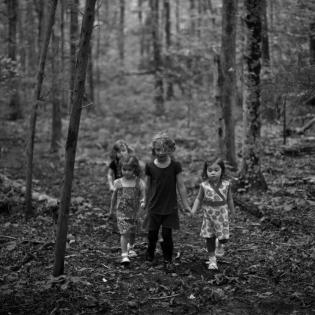Saving the Trees (Private-Religious)
This lesson introduces the concept that trees are just one of many elements in nature that are of fundamental importance to our lives. Learners will explore various reasons why we need nature, why we should be stewards of the environment and will be inspired to work harder to protect Mother Earth.
The learner will:
- explain the Biblical prohibition against destroying fruit trees in an expansive way that prohibits all wasteful behavior, known in Hebrew as Ba’al Tashchit.
- list numerous reasons why humans need trees, based on The Giving Tree, by Shel Silverstein.
- create a storybook to explain why other elements of nature are important to humans.
- work to incorporate Ba’al Tashchit in their lives by limiting wastefulness in their home.
- Handful of sticks
- Attachments One: Deuteronomy 20:19
- Attachment Two:Comentary on Deuteronomy 20:19
- The Giving Tree, by Shel Silverstein
- Chart paper cut into the shape of a very large tree or chart paper with a very large tree drawing
- Markers or paint
- Attachment Three: Storybook Pre-Write Worksheet
- Lined Paper
- Navigating the Bible II: https://bible.ort.org/books/pentd2.asp?ACTION=displaypage&BOOK=5&CHAPTER=20
- Silverstein, Shel. The Giving Tree. Harpercollins Juvenile Books, 1964. ISBN:0060256656
- Seuss, Dr. The Lorax. Random House,1971. ISBN #: 0394823370
Instructions
Anticipatory Set:Bring in a handful of sticks in all shapes and sizes. Ask students to list as many uses for the sticks as they can think of in two minutes. Ask them to share their ideas and write them on the board.
As a class, read Attachment One: Deuteronomy 20:19. Ask students to explain what action is not allowed during war. (Cut down a fruit tree)
Explain that destroying trees without a reason is called ba’al tashchit. Have each student write an explanation as to why we are not allowed to do this.Share the students' responses.
Read The Giving Tree, by Shel Silverstein.Ask the class to explain how the tree taught the little boy a lesson.What was the lesson? Was the boy appreciative of the tree?Did he become more appreciative of the tree at the end of the story? Was he a good steward of the Earth’s resources?
Assign each student a partner and have them list different ways in which trees help man.Guide them to include ideas mentioned in the book as well as other ideas (fruit, shade, fun, rest, paper, blossoms, host animals, oxygen, and wooden furniture.)
Cut a large tree out of chart paper or draw a large tree on chart paper.Go through the lists that the students developed, allowing each pair to share one at a time.Discuss which parts of the tree helps man in each particular way and have them label the picture accordingly.
Read the Attachment Two: Commentary on Deuteronomy 20:19. Expand the idea that you cannot waste a fruit tree and that any wasteful behavior is prohibited.Explain that all wasteful behavior fits into the category of ba’al tashchit and is strongly discouraged by the rabbis.Ask the class why they think the rabbis would discourage wastefulness.Guide them to see the negative results of wasteful behavior.
Ask the students to brainstorm other things which humans may misuse besides tree products. List responses on the board.
Tell students that it is important to teach others the lesson that we learned about “ba’al tashchit” and explain that they are going to do so in a similar way to Shel Silverstein’s book about trees. They are to select a natural resource (besides a tree) that is helpful to humans. They must write a story that teaches its readers not to misuse this item.
Distribute Attachment Three: Storybook Pre-write Worksheet and give students time to plan their story and fill out the worksheet.
Give students time to write their stories.
Once drafts have been edited and rewritten (and even illustrated), share stories with the class.
Students will be assessed based on the level of understanding of ba’al tashchit that they demonstrate in their class participation in discussions and brainstorming activities and their short stories.
Learners will choose one way to limit trash in their individual household.
Philanthropy Framework
-
Strand PHIL.II Philanthropy and Civil Society
-
Standard PCS 07. Skills of Civic Engagement
-
Benchmark E.2 Discuss an issue affecting the common good in the classroom or school and demonstrate respect and courtesy for differing opinions.
-
Benchmark E.3 Participate in acts of democratic citizenship in the classroom or school, such as voting, group problem solving, classroom governance or elections.
-
-
